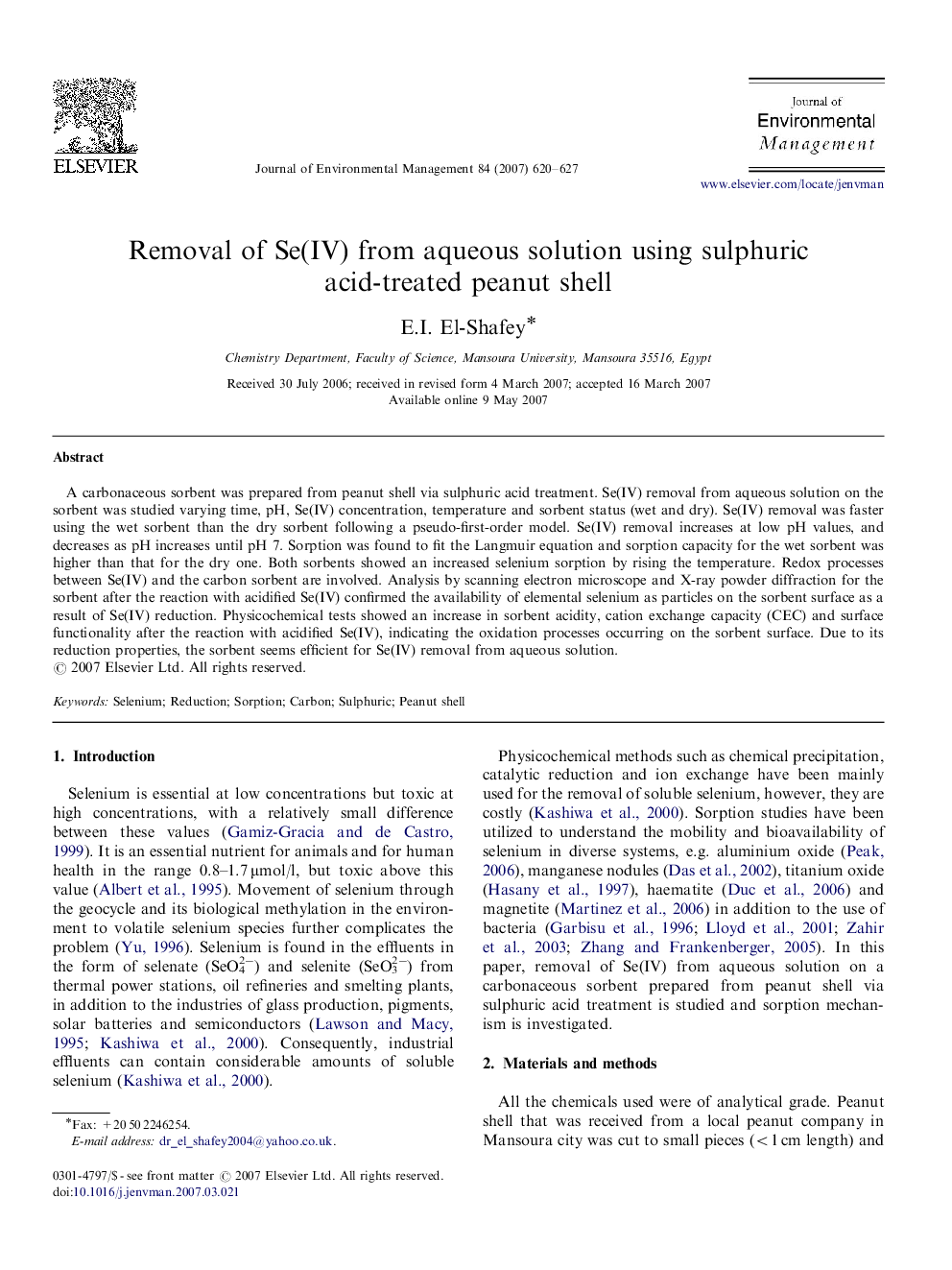| Article ID | Journal | Published Year | Pages | File Type |
|---|---|---|---|---|
| 1058661 | Journal of Environmental Management | 2007 | 8 Pages |
Abstract
A carbonaceous sorbent was prepared from peanut shell via sulphuric acid treatment. Se(IV) removal from aqueous solution on the sorbent was studied varying time, pH, Se(IV) concentration, temperature and sorbent status (wet and dry). Se(IV) removal was faster using the wet sorbent than the dry sorbent following a pseudo-first-order model. Se(IV) removal increases at low pH values, and decreases as pH increases until pH 7. Sorption was found to fit the Langmuir equation and sorption capacity for the wet sorbent was higher than that for the dry one. Both sorbents showed an increased selenium sorption by rising the temperature. Redox processes between Se(IV) and the carbon sorbent are involved. Analysis by scanning electron microscope and X-ray powder diffraction for the sorbent after the reaction with acidified Se(IV) confirmed the availability of elemental selenium as particles on the sorbent surface as a result of Se(IV) reduction. Physicochemical tests showed an increase in sorbent acidity, cation exchange capacity (CEC) and surface functionality after the reaction with acidified Se(IV), indicating the oxidation processes occurring on the sorbent surface. Due to its reduction properties, the sorbent seems efficient for Se(IV) removal from aqueous solution.
Related Topics
Physical Sciences and Engineering
Energy
Renewable Energy, Sustainability and the Environment
Authors
E.I. El-Shafey,
